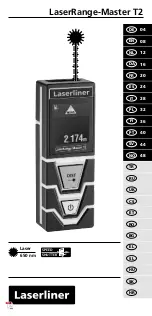
Explosion-protection relevant information
CI/FAM540-X1
VA Master FAM540
EN - 17
4.2.3 Cable glands and signal cables
Cable glands
The meters are shipped with cable threads or ½” NPT threads with dust protection plugs. The
different types of cable glands depend on the configuration of the Ex protection and can be
selected via the model key.
Approved pressure-resistant cable glands are provided in combination with the ATEX and
IECEx Ex d "pressure-resistant design". All other ATEX and IECEx models are shipped with
approved plastic glands.
To ensure proper routing of cables, maintain the following cable diameters:
• Ex d design:
7.2 ... 11.7 mm (0.28 ... 0.46 inch)
• non-Ex d design: 5.0 ... 9.0 mm (0.20 ... 0.35 inch)
Warning - General hazards!
Observe the the special instructions for Ex d cable fittings in section Special installation
instructions for meters with explosion protection type "Encapsulated device".
Meters with ½” NPT threads and ATEX and IECEx approvals can be ordered and operated
without cable glands (with the exception of Ex d meters). The operator is responsible for
properly installing threaded pipe connections according to national regulations (e.g., NEC, CEC,
ATEX137, IEC60079-14, etc.).
Signal cable
The Ex calculations are based on temperatures of 80 °C (80.00 °C) at the cable input. For this
reason, cables with a specification of 80 °C (80.00 °C) must be used.
The following applies for cables that are limited to 70 °C (158 °F):
The maximum ambient temperature T
Amb
= 60 °C (140 °F).
The resulting, new maximum temperatures of the medium are determined as follows:
• Calculate a new ambient temperature: T
Amb
new = T
Amb
+ 10 °C (18 °F).
• Use the new ambient temperature T
Amb
new to determine in the tables the new associated
allowable temperatures for the medium.
• Please refer to the tables with the original ambient temperature T
Amb
to determine the
relevant temperature class.
Example:
• T
Amb
= 50 °C (122 °F) becomes T
Amb
new = 60 °C (140 °F).
• Determine the fluid temperature for T
Amb
= 60 °C (140 °F).
• Determine the temperature class for T
Amb
= 50 °C (122 °F).
















































